Divya Desams in Tiruchirappalli: A Spiritual Journey
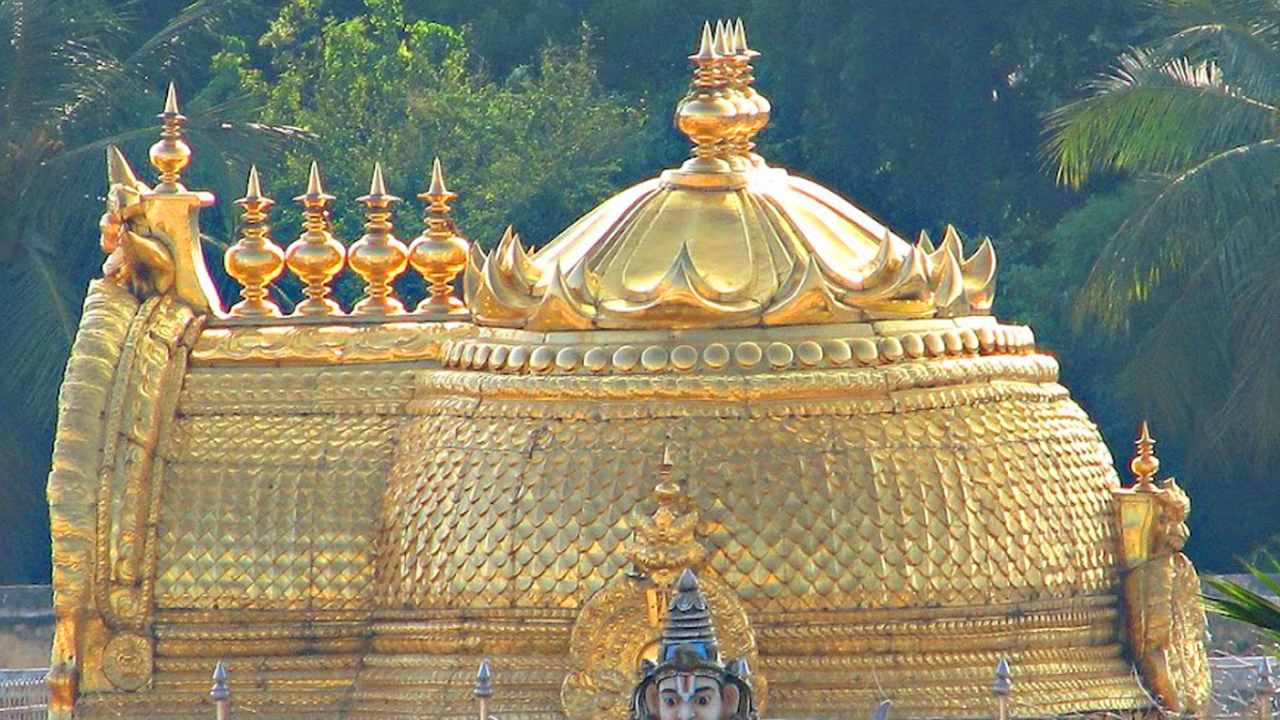
Introduction
Divya desams in Tiruchirappalli, Tiruchirappalli (formerly Trichy) is home to six distinguished Divya Desams dedicated to Lord Vishnu that are commemorated each year with the Nalayira Divya Prabandham by 12 Azhwars. These ancient temples are celebrated for their architectural grandeur, spiritual significance, and centuries-old legends. Of particular note is Thiruvarangam or Sri Ranganathaswamy Temple located on Srirangam Island. At the top of all 108 Divya Desams is Bhooloka Vaikuntam, where Lord Ranganathar rests eternally reclining upon Adisesha. Thirukkozhi Temple located in Uraiyur is also significant; here Azhagiya Manavalan Perumal lives alongside Kamalavalli Thayar; this shrine is famous for its association with Thirumangai Azhwar’s poetry.
Thirukkarambanoor’s Uthamar Koil temple, dedicated to Purushothaman Perumal, boasts the unusual distinction of worshipping all three deities at once – Vishnu, Shiva and Brahma are honored here. Thiruvellarai, with its picturesque white rock formations, houses Pundarikakshan Perumal who has strong links with Periyazhwar and Thirumangai Azhwars; Thiru Anbil near Kollidam River honours Vadivazhagiya Nambi Perumal by commemorating tender affection between this deity and Azhwars; finally Thirupper Nagar or Koviladi where Appakudathan Perumal is worshipped offers pilgrims a peaceful setting to connect with God;
These temples not only showcase the grandiosity of Dravidian architecture, but they also offer spiritual solace and insight into Tamil culture and devotion. Each has its own story to share; some feature hymns sung by Azhwars while others present mythological tales that continue to delight devotees. Conveniently located near Tiruchirappalli transportation hubs make these Divya Desams easily accessible to both dedicated worshipers as well as curious travelers.
108 Divya Desam: Sacred Abodes of Vishnu

The 108 Divya Desam are among the most revered temples that are dedicated to Lord Vishnu which is that are celebrated by the holy hymns of those who are the Azhwars who are the famous Vaishnavite saints from Tamil Nadu. The temples are mentioned in the Nalayira Divya Prabandham which is a collection of 4000 Tamil lyrics composed in Azhwars. Azhwars in the period between 6th and 9th century CE. The individual Divya Desams is considered a holy abode, where Vishnu shows up in various ways to bless His worshipers.
They are spread all across India The majority of them are of them located in Tamil Nadu, the 108 Divya Desams also include sacred shrines in Kerala, Andhra Pradesh, Uttar Pradesh, and even one located in Nepal (Muktinath). In the shrines, Sri Rangam in Tiruchirappalli, Tirupati in Andhra Pradesh, and Badrinath in Uttarakhand are of great significance.
Every Divya Desam is unique in its god form, temple design and an intriguing history which is interspersed by local myths. These temples aren’t just places of pilgrimage, but also architectural and cultural monuments, illustrating the long-standing culture in Vaishnavism. Visitors to these temples believe that they get the supreme benefit from moksha (salvation) and eternal mercy of Lord Vishnu.
108 Divya Desams in Tamil Nadu: A Spiritual Treasure
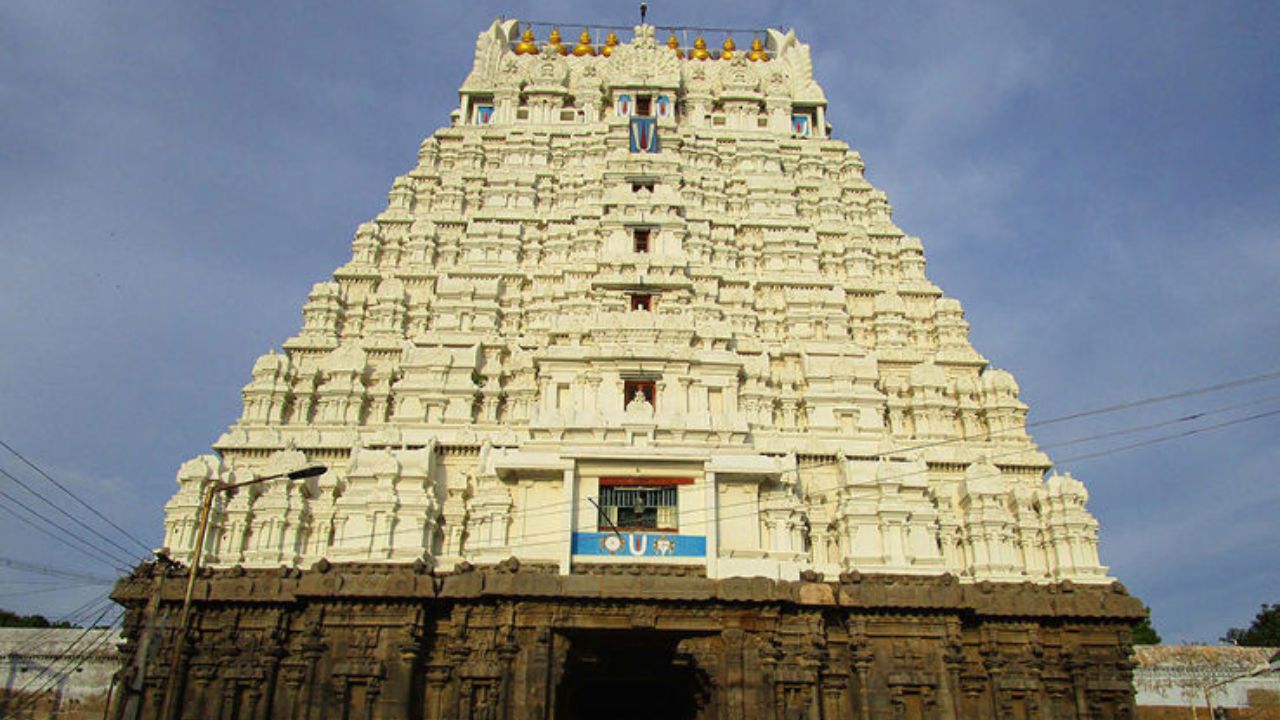
Tamil Nadu is home to the highest amount of Divya Desams, comprising 84 of the 108 divya desams located throughout the entire state. These temples of reverence have been devoted to Lord Vishnu and are celebrated during Nalayira Divya Prabandham Nalayira Divya Prabandham, the Tamil worship songs that are part of the Azhwars. Every one of the 108 Divya Desam in Tamil Nadu, has unique historical significance, the temple’s architecture, and mystical stories that link with the Vaishnavite tradition.
Some of them include Sri Rangam situated in Tiruchirappalli which is the most renowned Tiruchirappalli Divya Desam as well as one of the biggest Temple complexes anywhere in the world as well as Tiruvallikeni (Triplicane Parthasarathy Temple) in Chennai. Other notable Divya Desams are Kanchipuram Varadaraja Perumal Temple, Srivilliputhur Andal Temple as well as Tirukostiyur. Each temple has its own distinctive mythology, deity and traditions, which makes them a crucial element of Tamil Nadu’s extensive religious and cultural heritage.
Pilgrims from around world flock to the Tamil Nadu’s Divya Desams in search of the divine blessings of God, particularly during Vaikunta Ekadasi as well as other celebrations. It is believed that visiting these temples to provide moksha (salvation) as well as an increased connection to Lord Vishnu. Tamil Nadu remains the heart of Vaishnavism where worship art, architecture, and art are united in reverence of Vishnu.
List of Divya Desams in Tiruchirappalli

List of Divya Desams in Tiruchirappali given below:
- Thiruvarangam (Sri Rangam) – Sri Ranganathaswamy Temple
- Thirukkozhi (Uraiyur) – Sri Azhagiya Manavala Perumal Temple
- Thirukkarambanoor – Sri Purushothaman Perumal Temple
- Thiruvellarai – Sri Pundarikashan Perumal Temple
- Thiru Anbil – Sri Vadivazhagiya Nambi Perumal Temple
- Thirupper Nagar – Sri Appakkudathaan Perumal Temple
6 of Trichy divya desams , Tiruchirappalli, formarly known as Trichy, a key spiritual destination in Tamil Nadu, is home to six sacred Divya Desams. The most renowned is Thiruvarangam (Sri Rangam), dedicated to Sri Ranganathar, and is one of the largest functioning Hindu temples in the world. Located on an island formed by the Cauvery River, it is often referred to as the earthly abode of Vishnu.
Thirukkozhi (Uraiyur), situated in Uraiyur, the ancient capital of the Cholas, is dedicated to Azhagiya Manavalan Perumal and Kamalavalli Thayar. It holds historical significance with connections to Chola history.
Thirukkarambanoor (Uthamar Koil), located near the outskirts of Tiruchirappalli, is a unique temple where Brahma, Vishnu, and Shiva are worshipped, with Purushothaman Perumal being the main deity.
Thiruvellarai, approximately 25 kilometers from the city, is a Divya Desam dedicated to Pundarikakshan Perumal. Its ancient architecture and sacred legends make it a popular pilgrimage site.
Thiru Anbil, situated in the village of Anbil on the banks of the Kollidam River, is devoted to Vadivazhagiya Nambi Perumal, offering a peaceful retreat for devotees.
Thirupper Nagar (Koviladi), located about 30 kilometers from Tiruchirappalli, is home to Appakudathan Perumal and is known for its tranquil surroundings, making it an ideal place for spiritual reflection.
Divya Desams in Tiruchirappalli
Tiruchirappalli (Trichy), one of Tamil Nadu’s significant spiritual hubs, boasts six revered Divya Desams that are revered by Azhwars, part of 108 such establishments cited in Nalayira Divya Prabandham. Details of these six temples given below:
1. Thiruvarangam (Sri Rangam)
- Perumal’s Name: Sri Ranganathar (Also known as Namperumal)
- Thayar’s Name: Sri Ranganayaki Thayar
- Temple’s Old Name: Bhooloka Vaikuntam
- Vimanam’s Name: Pranavaakruthi Vimanam
- Temple Tank: Chandra Pushkarini
- Azhwars who praised the temple: Periyazhwar, Thirumangai Azhwar, Thondaradippodi Azhwar, Andal, Kulasekara Azhwar
- District: Tiruchirappalli
- Nearest Airport: Tiruchirappalli International Airport (approx. 15 km)
- Nearest Railway Station: Srirangam Railway Station (1 km)
- Bus Stand: Central Bus Stand, Tiruchirappalli

2. Thirukkozhi (Uraiyur)
- Perumal’s Name: Azhagiya Manavalan Perumal
- Thayar’s Name: Kamalavalli Thayar
- Temple’s Old Name: Kozhiyur
- Vimanam’s Name: Uthpalavathaka Vimanam
- Temple Tank: Kalyana Theertham
- Azhwars who praised the temple: Thirumangai Azhwar
- District: Tiruchirappalli
- Nearest Airport: Tiruchirappalli International Airport (approx. 10 km)
- Nearest Railway Station: Tiruchirappalli Junction (3 km)
- Bus Stand: Central Bus Stand, Tiruchirappalli
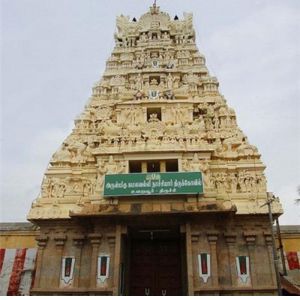
3. Thirukkarambanoor (Uthamar Koil)
- Perumal’s Name: Purushothaman Perumal
- Thayar’s Name: Poornavalli Thayar
- Temple’s Old Name: Karambanur
- Vimanam’s Name: Uthpala Vimanam
- Temple Tank: Kadamba Pushkarini
- Azhwars who praised the temple: Thirumangai Azhwar
- District: Tiruchirappalli
- Nearest Airport: Tiruchirappalli International Airport (approx. 15 km)
- Nearest Railway Station: Tiruchirappalli Junction (8 km)
- Bus Stand: Central Bus Stand, Tiruchirappalli
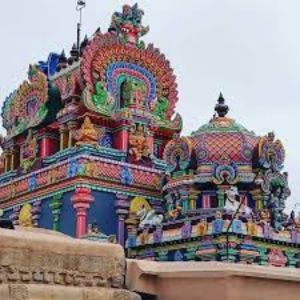
4. Thiruvellarai
- Perumal’s Name: Pundarikakshan Perumal
- Thayar’s Name: Shenbagavalli Thayar
- Temple’s Old Name: Swethagiri
- Vimanam’s Name: Vimalakruthi Vimanam
- Temple Tank: Shwetha Pushkarini
- Azhwars who praised the temple: Periyazhwar, Thirumangai Azhwar
- District: Tiruchirappalli
- Nearest Airport: Tiruchirappalli International Airport (approx. 25 km)
- Nearest Railway Station: Tiruchirappalli Junction (20 km)
- Bus Stand: Central Bus Stand, Tiruchirappalli
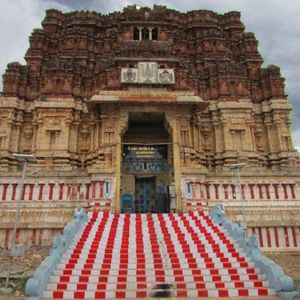
5. Thiru Anbil
- Perumal’s Name: Vadivazhagiya Nambi Perumal
- Thayar’s Name: Azhagiyavalli Thayar
- Temple’s Old Name: Vellur
- Vimanam’s Name: Utpala Vimanam
- Temple Tank: Mandooka Pushkarini
- Azhwars who praised the temple: Thirumazhisai Azhwar, Thirumangai Azhwar
- District: Tiruchirappalli
- Nearest Airport: Tiruchirappalli International Airport (approx. 30 km)
- Nearest Railway Station: Lalgudi Railway Station (5 km)
- Bus Stand: Central Bus Stand, Tiruchirappalli
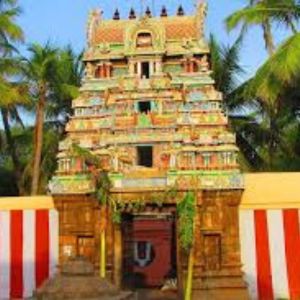
6. Thirupper Nagar (Koviladi)
- Perumal’s Name: Appakudathan Perumal
- Thayar’s Name: Indiradevi Thayar
- Temple’s Old Name: Indragiri
- Vimanam’s Name: Indira Vimanam
- Temple Tank: Amrita Pushkarini
- Azhwars who praised the temple: Thirumangai Azhwar
- District: Tiruchirappalli
- Nearest Airport: Tiruchirappalli International Airport (approx. 30 km)
- Nearest Railway Station: Lalgudi Railway Station (10 km)
- Bus Stand: Central Bus Stand, Tiruchirappalli
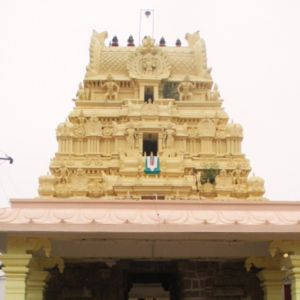
12 Alvars

Out of the 12 Alvars the following 6 Alvars have glorified the Divya Desams in Tiruchirappalli through their hymns:
- Periyazhwar
- Thirumangai Azhwar
- Thondaradippodi Azhwar
- Andal
- Kulasekara Azhwar
- Thirumazhisai Azhwar
These Azhwars composed beautiful verses in praise of the deities of these temples, contributing to their spiritual significance.
1. Periyazhwar
Periyazhwar was one of the leading Azhwars from Srivilliputhur. Known by many as Vishnuchittar, he is revered for his deep devotion to Lord Vishnu and especially for nurturing him, like an earthly foster parent of Krishna’s infanthood. In his Tiruppallandu hymns he blessed God for long and prosperous rule, emphasizing his beauty and greatness with love and protection poured upon the divine being. He was also foster father to Andal another Azhwar who later made an impressionable career choice after seeing his devotion firsthand!

2. Thirumangai Azhwar
Thirumangai Azhwar, better known by his popular moniker Kaliyan, is revered as one of the last and most prolific Azhwars. Although originally a chieftain and warrior, his devotion to Lord Vishnu is legendary; his literary and poetic works in Nalayira Divya Prabandham feature his praise of him in 86 Divya Desams (divya desams are devotional places in Vaishnavism). Thirumangai Azhwar was passionate in his devotion; his hymns reflect this passion with respect, making his contribution both valuable to Vaishnavism both spiritually as well as propagation wise.
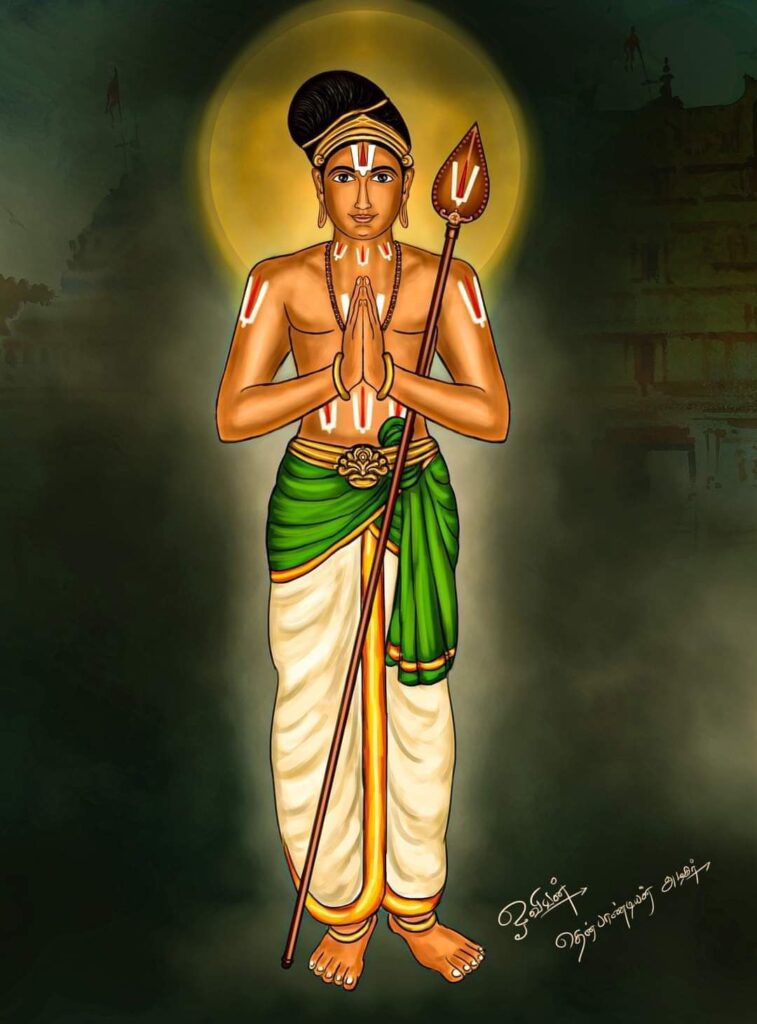
3. Thondaradippodi Azhwar
Thondaradippodi Azhwar, more commonly known by his moniker Vipranarayana, was an Indian saint deeply dedicated to Lord Ranganathar of Srirangam. His name, which translates as “dust of Vishnu’s devotees,” speaks volumes for his humility. Composing Tirumalai and Tiruppalliyezhuchi — two sets of verses which express his devotion for this deity while at the same time serving them and helping spiritual development — Thondaradippodi Azhwar dedicated his entire life towards serving this deity.

4. Andal
Andal is widely revered as one of the only female Azhwars for her deep devotion to Lord Vishnu in particular as an embodiment of Bhudevi (Mother Earth). Periyazhwar found Andal as an infant hidden beneath a tulasi plant near their household and raised her there before eventually merging with him and eventually becoming one with Lord Ranganatha through marriage – becoming his consort before eventually merging into Him herself and merging as He. Her Tiruppavai is regularly recited during Margazhi when her Tiruppavai is read aloud during worship services to her honor!

5. Kulasekara Azhwar
Azhwar Kulasekara Azhwar was a king who relinquished his throne to devote himself fully to serving Lord Vishnu. His devotion was profound, especially towards Lord Rama and Vishnu; Kulasekara Azhwar composed hymns which displayed this depth of devotion – most famously Perumal Tirumozhi which described this strong personal bond to both of these divine beings. Kulasekara Azhwar lived his life as fully giving himself over to Lord Vishnu; these hymns testify his dedication.

6. Thirumazhisai Azhwar
Thirumazhisai Azhwar was an intensely philosophical saint who struggled with the transience of life and its material world before eventually finding peace through devotion to Lord Vishnu. His hymns represent his search for truth while rejecting worldly pleasures; Naanmugan Tiruvandadi and Thiruchandavirutham, among his other works, explore soul connection to divinity while underscoring impermanence of worldly life and its need to surrender all control to Vishnu. His life and works provide spiritual awakening while his hymns reflect these ideas through music that speaks directly.

Conclusion
Tiruchirappalli stands out as an impressive pilgrimage destination for devotees of Lord Vishnu. Boasting six revered Divya Desams – each embodying different aspects of Vaishnavism with intricate architectural styles, symbolic manifestations and connections to Tamil Nadu culture – Tiruchirappalli offers something special to all who travel there to worship Lord Vishnu.
Thiruvarangam (Sri Rangam), the crown jewel of the Divya Desams, not only stands as an architectural marvel but is a living testament to millions of devotees’ devotion. Boasting sprawling complexes, exquisite carvings, and vibrant festivals – making this temple an oasis for spiritual rejuvenation and cultural enrichment alike. Legends surrounding its construction by Azhwars echo down through time inviting devotees into its divine ambience and take refuge within its holy environs.
Thirukkozhi Temple in Uraiyur carries historical importance as part of the Chola Dynasty legacy. Visiting this site offers visitors an opportunity to learn more about spirituality and history connections within this region.
Thirukkarambanoor and Thiruvellarai provide visitors with an intimate insight into devotion. Although not as popular as Sri Rangam, these temples possess their own special appeal and spiritual energy that remind visitors that every temple holds stories of faith and dedication waiting to be discovered by visitors.
Thiru Anbil and Thirupper Nagar add another dimension of spiritual beauty and growth in Tiruchirappalli. Both temples offer quiet environments ideal for reflection and spiritual growth, along with picturesque settings that foster meditation and prayerful contemplation.
Visits to Divya Desams are more than pilgrimages – they provide an experience that deepens one’s understanding of faith, community and culture. Their collective energy creates an inclusive space where all can feel connected regardless of background; each visit provides an opportunity to reflect on one’s spiritual journey while appreciating intricate art and history that decorate these sacred spaces.
These ancient temples remind us of the timeless nature of faith. Tiruchirappalli’s Divya Desams stand as beacons of hope and devotion, inviting all to participate in their sanctity. Visiting one or more of these Divya Desams offers a deep spiritual experience, a chance to explore one’s devotion and connect with the divine presence that permeates everyday life. They provide an opportunity to reflect on spiritual identity and celebrate the eternal connection between the devotee and the divine.
